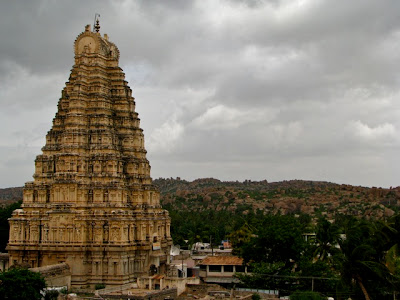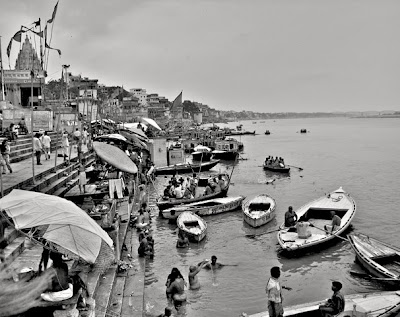
Monday, November 02, 2009
Monday, October 26, 2009
Tuesday, October 20, 2009
Matriculation




Where bowler hatted persons guide the many incoming students into the Sheldonian, when the town is over run by penguined students and tourists and parents become paparazzi and the students celebrities. It was fun. I ended up very drunk and took the best part of the next day recovering. Like I said, fun.
Thursday, October 15, 2009
Friday, October 09, 2009
Tuesday, October 06, 2009
Oxford!!!
---------------------------------------------------------------------------------

Sunday, September 13, 2009
Friday, September 11, 2009
Saturday, September 05, 2009
The making of the colonial army
Current read is Nicholas Dirks' Castes of Mind: Colonialism and the Making of Modern India which is excellent and highly recommended - among other things to demonstrate just how much influence colonial anthropology and ethnology still have in India. Wanted to post an excerpt here that I found particularly interesting – the melding of ethnography and making of an army.
"The mutiny of 1857, even if it had not led to general rebellion, would have been a major crisis for the Indian army. In July 1858, the British government appointed a commission under Major-General Peel (the secretary of state for war) to examine the organization of the Indian army and recommend changes in the hope that it might avoid any repetition of the events of the previous year. Many witnesses (all forty-seven of them British) suggested that the higher castes be excluded from the army; other witnesses were split on whether to rely more heavily on Sikhs and Muslims. In the end, the commission recommended a higher ratio of British troops to Indian, but no specific caste or ethnic prescription for recruitment. The commission did suggest however, that “the Native Army should be composed of different nationalities and castes, mixed promiscuously through each regiment.” Nevertheless, Lord Elphinstone, urged that soldiers of diverse backgrounds not be mingled in the same regiment, on the principle of “divide et impera.”
As a consequence, regiments were for the most part to be made up of diverse but internally homogenous class companies, made up entirely of single caste or ethnic groups. George MacMunn, a high ranking army officer in the early years of the twentieth century and an avid historian of the Indian army, wrote that “The object aimed at in the new construction was, to some extent, to put the races into water tight compartments, while at the same time developing their martial characteristics to the full...” MacMunn believed that the army had actually played a role in strengthening the Sikh faith and community; by not admitting “unbaptized” Sikhs, for example, “it is the British officers who have kept Sikhism up to its old standard.” In fact, British recruiting had insisted on taking only those Sikhs who looked (to the British) like Sikhs, selecting only unshorn Khalsa Sikhs for army service. And as Bernard Cohn has demonstrated, the almost canonic status of the Sikh turban owes its current importance to the development of special Sikh codes of regimental dress; the marker of an ethnic regiment became the sign of a modern religious community across the world.
The policy of “divide et impera” was reaffirmed in 1879 by the high-level Eden Comission. The subsequent organization of the army into four main regional commands, recruited in different regions and serving in different regiments, put colonial sociology to work directly in the service of imperial authority. It also allowed the British to believe that any subsequent unrest could be quelled by other military units who would share neither national sentiment, nor specific grievance. ... Besides, the British began systematically reduce the troublesome elements in the army and to provide pride of place to Sikhs and Punjabis generally, Muslim, and other “races” deemed loyal in part because they had supported the British in that great test of racial and national loyalty, the rebellion.
Concerns about military recruitment in the years after the mutiny led to a consolidation of various colonial theories about the martial races of India. ... First, the martial races were seen as devoted to military discipline and inherently predisposed to be loyal subjects of the Crown. In the wake of the rebellion, troops from the Punjab, many of them Sikh, were recruited heavily to the Indian army, in part because of their martial claims to fame in the recent past, and in part because of their historical loyalty ever since they were first defeated in 1848, and especially during the Great Rebellion. By 1875, Punjabis made up about 44 percent of the combined Bengal army and Punjab frontier force. After 1880, the balance shifted even more heavily toward Punjabis, as well as toward Nepalis (in particular Gurkhas), in part because of ever increased recruitment in the north due to the perceived threat from Russia, in part because of the steady diminution in numbers making up the Madras army. Lord Roberts, commander-in-chief of the Indian army from 1885 to 1893 and a leading exponent of the idea of martial races, held that the peoples of southern India were inherently unwarlike. As a result of deliberate ethnographic policy, in 1882 eight of the forty Madras infantry battalions were disbanded; by the turn of the century only twenty-five battalions remained, less than half the number that had been in uniform at the time of rebellion."
Thursday, September 03, 2009
Tuesday, September 01, 2009
Friday, August 28, 2009
Thursday, August 27, 2009
Wednesday, August 26, 2009
Onion Domes

Tuesday, August 25, 2009
Hampi: Garuda's Chariot





Thursday, August 20, 2009
Wednesday, August 19, 2009
Hampi: The Virupaksha Gopura


Tuesday, August 18, 2009
Discussing this freedom
The Times of India on 15th August had an interview with M.F. Husain that talked about his recollections of 1947, independence, partition, his art and even ironically his own banishment from the country a few years ago following the brouhaha over his decades old painting of a naked Saraswati.
Over dinner later that evening this topic came up and I remarked how tragic it was that such a remarkable artist wasn't able to enter the country because of fear of arrest. Perhaps not surprisingly, I was told “Well yes, maybe, but he shouldn't have painted that.” “Why not? It was decades ago and it's hardly obscene.” At this point of course, the tired old rebuttal the one that I have heard time and time again was brought out – We keep tolerating such pictures. Why doesn't he paint Muhammad? The rules of Islam must be followed, but Hindu deities defiled?
Of course there are people who think this whole business is retarded, but they seem to me to be so small a minority as to be wholly invisible. Many of those who do agree that the situation is unfortunate, will often come out and say – but he shouldn't have painted that. The other more belligerent sort, of course, totally agree with the situation – would he ever dare to paint Muhammad naked?
Such spurious and ridiculous reasoning is most frustrating to say the least. For one those who do make these arguments refuse to reason. And they only helps illustrate how narrow, uninformed and chauvinistic a view they have of the religion they are seemingly protecting.
“It's not unusual or shocking to have a Hindu deity depicted nude,” I said, “So what is the big fuss? That a Muslim drew it?” “That's not the point. The thing is Hinduism has always been too liberal and that has only led to people further mocking and taking liberties with our idols. A stop has to be put somewhere. Do you think it's okay to have Lakshmi on your earrings1 or slippers? Our idols will be commodified and abused like the Buddha and the Buddhists have never really had the strength to bother to object. On the other hand, look at the ruckus that was created after the Danish cartoon incident.”2
Excellent. So the solution is to become more fanatical, less “effeminate”. These arguments, based on such fallacious logic, are so troubling because it is almost a matter of pride now, seemingly, to become more violent and belligerent. I have always felt that Hinduism is wonderful in how it encompasses so many varied, often completely non mainstream traditions, never defining apostasy. A large reason, I guess, is that rather than being a religion dictated by a strict rule book or code, it was a collection of beliefs – of all those peoples who lived beyond the Sindh; the Hindus. The shaping of the religion as we view it today is still largely influenced by the British understanding and interpretation – their very definition of the religion. Perhaps then, it's just reaching the logical puritanical end now.
Indian art has always drawn from Hindu myths – fantastical, beautiful, sexual. And it's not only Khajarao that has erotic statues, almost every temple does – the voluptuous skimpily clad apsaras and goddesses are everywhere. Should these be covered up too – perhaps like the statues at the Vatican, with leaves? It's also terribly silly to equate Hindu and Islamic artistic traditions – they have their own styles and stories that have found representation. But the ignorance of Islamic art is striking. For one, this false notion of Muhammad having never being painted is really untrue3. He has. Miniatures, across Turkey, Iran and India, have often represented the most wondrous, often erotic of stories – Leyla Majnun, Shirin Khusrau, of unknown meeting lovers.4
About a year ago, I was attending a talk on Islamic Art at the Asian Civilization Museum in Singapore. The professor talked about the kind of contemporary Islamic art he had seen in recent year – of course, mostly ignored by the international media, but much talked about in the local news. He mentioned an Islamic scholar in Indonesia who had exhibited some controversial paintings recently including one of a veiled Muhammad surrounded by semi naked houris. There had been no protests – perhaps it was just as well that these shows got little attention outside the local media.
The moral outrage people feel on behalf of a religion continues to baffle me. In the case of Husain, I just find it ironic that people have taken the mantle of protecting religious idols against a man who probably knows more about Hindu scriptures and tales than these moral guardians could ever hope to. And yet its their voice that is always the loudest, their refusal to listen to the other side rock solid, their ignorance complete. Depressingly, these people are the ones who seem to always manage to get their way.
1I don't care either way. But really, to say Hinduism isn't commodified enough already is laugh worthy.
2Talking of the Danish Cartoon incident, the Yale University Press took an amazingly tragic decision to not publish those cartoons in the forthcoming book “The Cartoons That Shook the World”. Yale press also refrained from publishing any other illustrations of the prophet including, a drawing for a children’s book; an Ottoman print; and a sketch by the 19th-century artist Gustave Doré of Muhammad being tormented in Hell, an episode from Dante’s “Inferno” that has been depicted by Botticelli, Blake, Rodin and Dalí.
3The Hadiths in this case are less than clear and have been interpreted differently and applied unevenly by the different branches of Islam.
4At the Salar Jung Museum in Hyderabad, one among the excellent miniature collection was a painting of the naked Sarmad, perhaps my favourite Sufi. The Persian Armenian Sarmad came to India and in Sindh fell in such intense love with a Hindu boy that he renounced everything, including his clothes and walked the country side naked. Sarmad became a favourite of Dara Shikoh, but this friendship and his “heretical” behaviour proved costly once Aurangzed won the war of succession . Aurangzeb ordered Sarmad beheaded, but his poetry lives on and he is still celebrated at his mausoleum in Delhi as Sarmad Shaheed.
Wednesday, August 12, 2009
Holy Men (?)




































